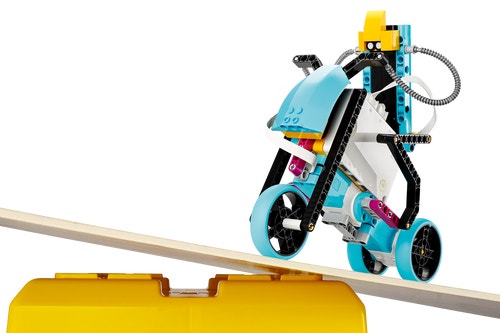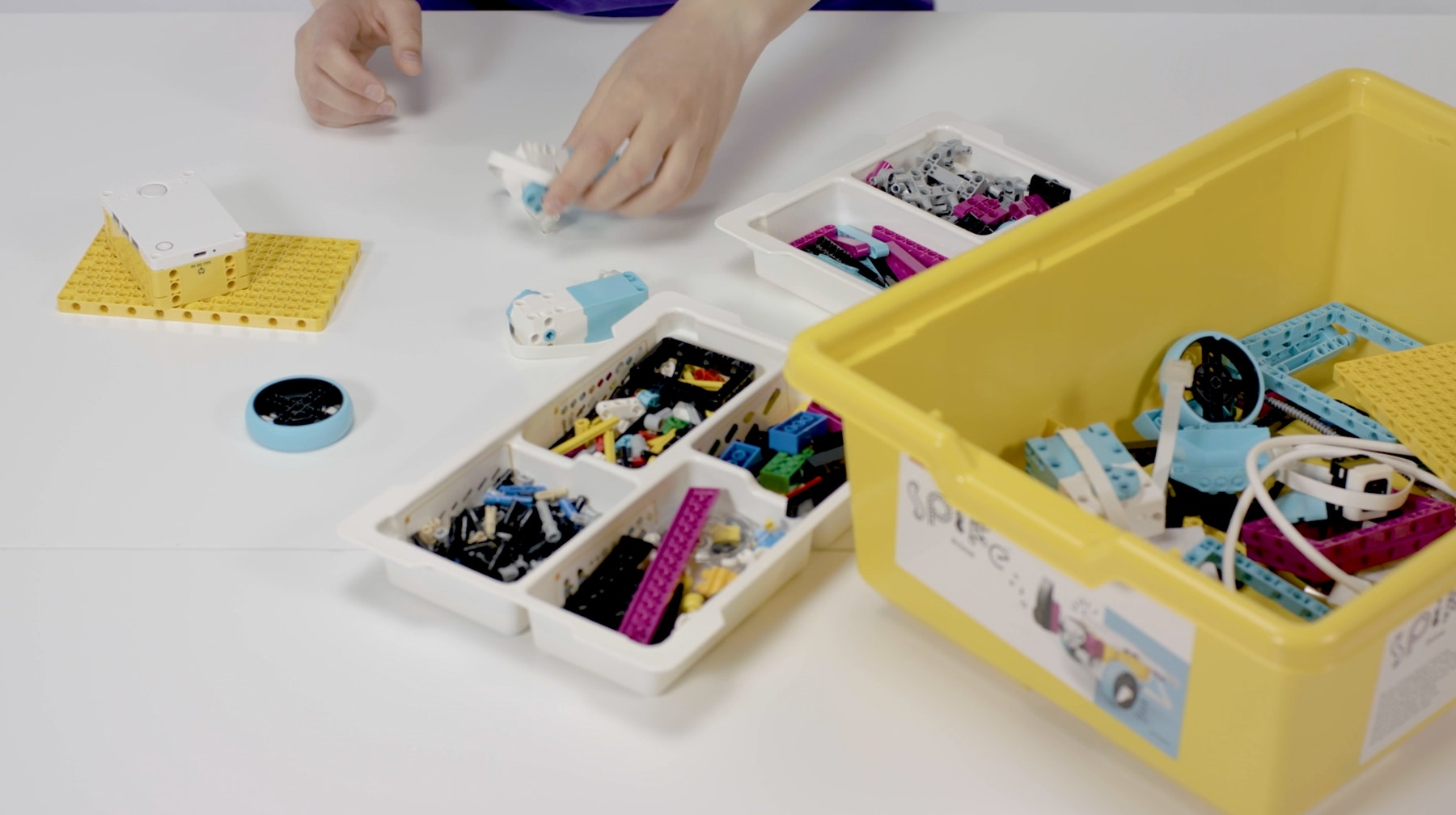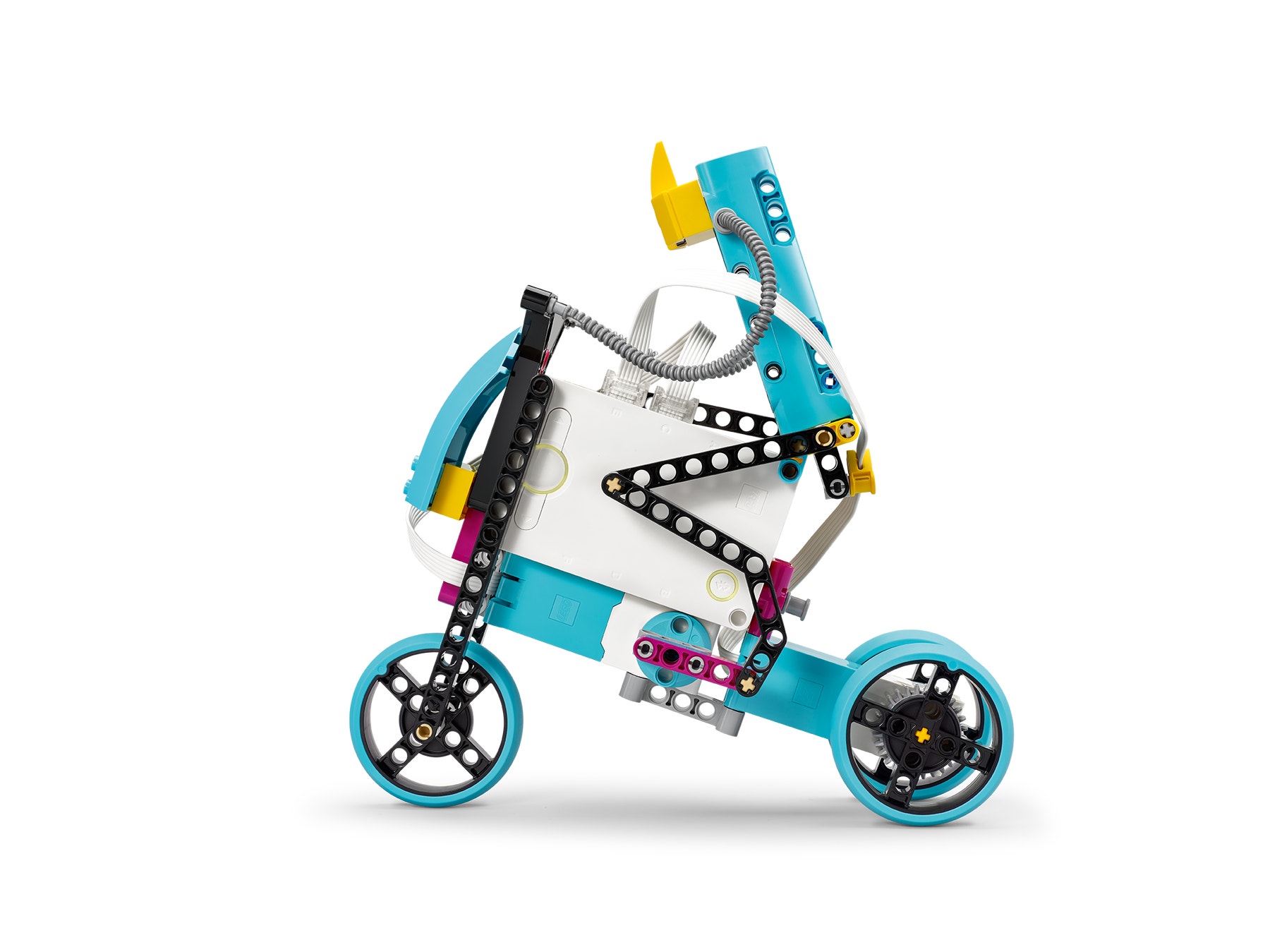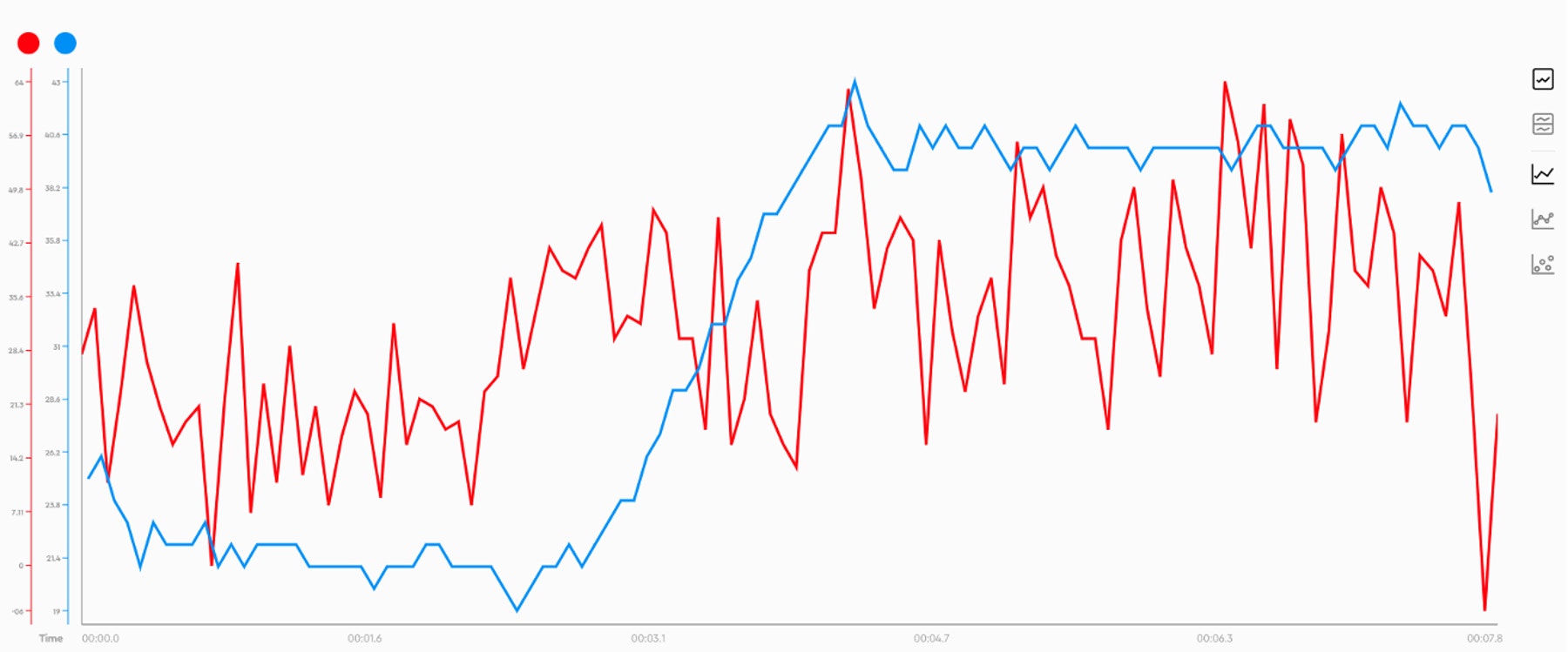This Is Uphill
Graph energy consumption to gain potential energy.

Engage
(Before the Lesson (20 Min.))
- The topic of this lesson is energy transfer. Your students will learn that in order for a cyclist to maintain a constant speed (i.e. constant kinetic energy) when going uphill (i.e. to gain potential energy), they must input energy. This lesson uses a model of an electric bike. Its energy will come from an increase in its motor's power consumption. In a real-life situation, this energy would come from the extra effort from the cyclist.
- Use various materials to engage your students on the topic of energy transfer.
Ignite a Discussion
Start a discussion by asking questions related to the lesson. Here are a few suggestions:
- What will happen to your speed as you go up a hill?
- What type of energy do you gain as you’re going up a hill?
- What must you do in order to maintain a constant energy level when you’re cycling?
- Why do you think this is the case?
Have your students write down their thoughts as a hypothesis.
Explore
(During the Lesson, 30 Min.)
- Have your students build a smart bike that can record its motor's power consumption and the angle of a slope. They can create their own models or follow the building instructions in the app to build the Smart Bike model.
- Ask your students to try out their models on a flat surface using the program suggested in the SPIKE App.
- Tell them to look at the graph and document what they see:
- Why do the two plotted lines look the way they do?
Explain
(During the Lesson, 45 Min.)
- Have your students repeat the experiment using a slope. They can create this using the SPIKE Prime box and a plank.
- Ask your students to explain how the smart bike's motor is adding energy to maintain a constant speed.
- Have them explain the relationship between the motor's power consumption and the angle of the slope.
- Tell them to export their data as a CSV file so they can manipulate it using other software if they wish.
Elaborate
(After the Lesson, 25 Min.)
- If your students still have access to their SPIKE Prime Sets, have them complete the tasks given in the SPIKE App. This will help them to elaborate on their learning with a bit of hands-on activity. Here are some examples:
- Challenge your students to create their own paths. Ask them to create paths that include a flat surface and upward and downward slopes.
- Have them trace what they think the graph of the motor's power consumption will look like. Then ask them to run their bike along the path to see if they were right.
- If your students don't have access to their sets, have them complete their Inventor Notebooks, or assign one of the extension activities that’s been suggested below. Most of the extension activities can be done using the data that was collected during the hands-on session
- Facilitate a sharing session in which your students discuss their thoughts and the results of their experiments. This can be done using whichever method/tool is the most efficient (i.e. in-person or online).
Evaluate
- Give feedback on each student's performance.
- To simplify the process, you can use the assessment rubrics that have been provided.
Assessment Opportunities
Teacher Observation Checklist
Establish a scale that suits your needs, for example:
Partially accomplished
Fully accomplished
Overachieved
Use the following success criteria to evaluate your students' progress:
- The students are able to program a device that logs data on a line graph.
- The students are able to interpret the values coming from the line graph.
- The students are able to use appropriate terminology to explain the transfer of energy.
Self-Assessment
Have each student choose the brick that they feel best represents their performance.
- Blue: I’m able to graph data using the program that’s been provided in the app.
- Yellow: I’m able to create my own line graph and explain my results.
- Violet: I've created new experiments on my own.
Peer Feedback
Encourage your students to provide feedback to one another by:
Having one student use the coloured brick scale above to score another student’s performance.
Asking them to present constructive feedback to one another so that they can improve their group’s performance during the next lesson. This is an excellent opportunity to use videoconferencing tools or blog posting tools in a blended learning scenario.

Differentiation
Simplify this lesson by:
- Taking the time to describe what a direct proportion is
- Asking your students to give examples of direct proportions from their daily lives
Take this lesson to the next level by:
- Asking your students to build their own smart bikes
- Challenging your students to create their own scientific protocols and decide which value(s) they'll track and how they'll do it

Tips
Building Tips

Coding Tips
This lesson is designed to be played while the hub is connected through USB or Bluetooth. While connected, the data collected by the Hub is streamed directly to your device and traced in real-time on the Line Graph.
Main Program

Science Data Tips
Here’s an example of the data your students can expect from this experiment.

Extensions
Maths Extension
To incorporate the development of maths skills:
- Help your students realise that the two values graphed during this lesson are recorded over time (i.e. angle over time and the motor's power over time).
- Have your students perform data manipulations, both manually and using online tools, to trace the graph of the motor's power over the angle of the slope.
Note: This will require additional time.

Literacy Extension
To incorporate the development of literacy skills:
- Have each student write a science enquiry journal, documenting their hypothesis and conclusions as a scientist would.
- Have each student write a newspaper article reporting on a major new scientific discovery. Ask them to document the scientific protocols used as a journalist would.
- Provide examples of scientific newspaper articles and science enquiry journals. Ask your students to compare the two and document their observations.
Note: This will require additional time.

Career Links
The students who enjoyed this lesson might be interested in exploring these career pathways:
- Health Science
- Education & Training
- Science, Technology, Engineering and Mathematics (Science and Maths)
- Transportation, Distribution & Logistics
Teacher Support
Students will:
- Perform an experiment that illustrates the transfer of electrical energy to potential energy
- LEGO® Education SPIKE™ Prime Set
- Device with the LEGO Education SPIKE App installed
- A plank or something that can be used to create a slope
ACSIS125
Collaboratively and individually plan and conduct a range of investigation types, including fieldwork and experiments, ensuring safety and ethical guidelines are followed.
ACSSU155
Energy appears in different forms, including movement (kinetic energy), heat and potential energy, and energy transformations and transfers cause change within systems.
ACMNA208
Solve problems involving direct proportion. Explore the relationship between graphs and equations corresponding to simple rate problems.
ACMNA193
Plot linear relationships on the Cartesian plane with and without the use of digital Technologies.
ACMNA194
Solve linear equations using algebraic and graphical techniques. Verify solutions by substitution.
ACMNA178
Given coordinates, plot points on the Cartesian plane, and find coordinates for a given point.
ACELY1725
Plan, draft and publish imaginative, informative, and persuasive texts, selecting aspects of subject matter and particular language, visual, and audio features to convey information and ideas.
ACTDIP025
Acquire data from a range of sources and evaluate authenticity, accuracy, and timeliness.
ACTDIP026
Analyse and visualise data using a range of software to create information and use structured data to model objects or events.
ACTDEP038
Independently develop criteria for success to evaluate design ideas, processes and solutions and their sustainability.
ACTDEP039
Use project management processes when working individually and collaboratively to coordinate production of designed solutions.




